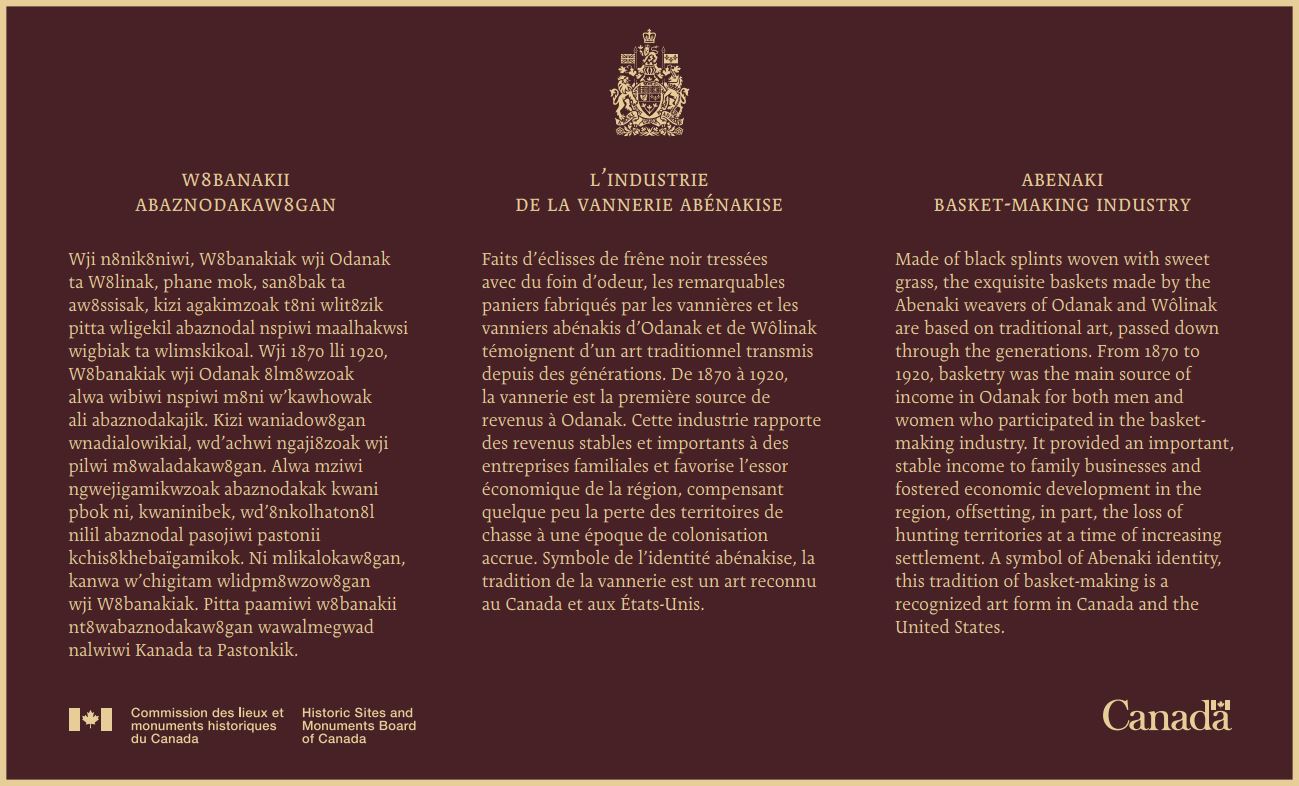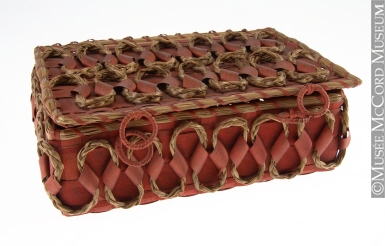Abenaki Basket-Making Industry National Historic Event (1870-1920)

The Abenaki Basket-Making Industry (1870-1920) was designated a national historic event in 2011.
Historical importance: Abenakis' main source of income and livelihood for the people of Odanak and Wôlinak between 1870 and 1920.
The Abenaki Basket-Making Industry (1870–1920)
Between 1870 and 1920, the Abenaki basket-making industry flourished in Odanak and Wôlinak, two communities located on the south shore of the St. Lawrence River. The exquisite baskets made by Abenaki men and women are based on traditional art passed down through the generations. During this period, the basket-making industry formed the basis for family businesses, expanded entrepreneurship, fostered economic development across the region, and brought prosperity to the two communities. In Odanak particularly, basketry was the main source of income for weavers who participated in the basket-making industry at this time. Made of black ash splints woven with sweet grass, these baskets are a recognized art form in Canada and the United States, and are a symbol of Abenaki identity.
The rise of artisanal products

© McCord Museum of Canadian History / M12633
For generations, the Abenaki lived in the St. Lawrence Valley. By the beginning of the 19th century, they continued to hunt, fish, and trap as their primary livelihood. However, increasing colonialism and the development of the forest industry affected their ability to live off the land. Game became scarce, access to their hunting territories was more and more restricted as these lands were used by settlers for resource extraction, and as a result, the Abenaki had to travel great distances to hunt. In time, fewer Abenaki were able to support their families through hunting and fishing. With the decline of the hunt, they turned towards the production of artisanal products, including woven baskets, canoes, and miniature birch bark wigwams.
Basket-making
At the end of the 1870s, the economy of the Abenaki profoundly transformed with the emergence of the basket-making industry. The trade expanded quickly and grew into a lucrative market, with families travelling to Ontario and the United States during the summer to sell tourists the baskets that they had crafted over the winter. The basket-making industry expanded so much that some families hired other Abenaki and French-Canadian workers to help them with production.
Symbols of Abenaki identity
Beginning in the 20th century, the Abenaki basket-making industry faced a number of challenges, including American customs duties, an increase in the price of sweet grass, and competition from French-Canadian craft production. The First World War further decreased the demand for baskets. Together, these factors reduced the industry’s profits and the Abenaki faced difficulties surviving on basket production alone. Despite these pressures, the expertise of Abenaki basket-makers was maintained and safeguarded. Today, these exquisite baskets are important symbols of Abenaki identity, and basket-making continues to be passed on as a distinctive part of Abenaki culture.
Backgrounder last update: 2021-04-28
The National Program of Historical Commemoration relies on the participation of Canadians in the identification of places, events and persons of national historic significance. Any member of the public can nominate a topic for consideration by the Historic Sites and Monuments Board of Canada.
- Date modified :